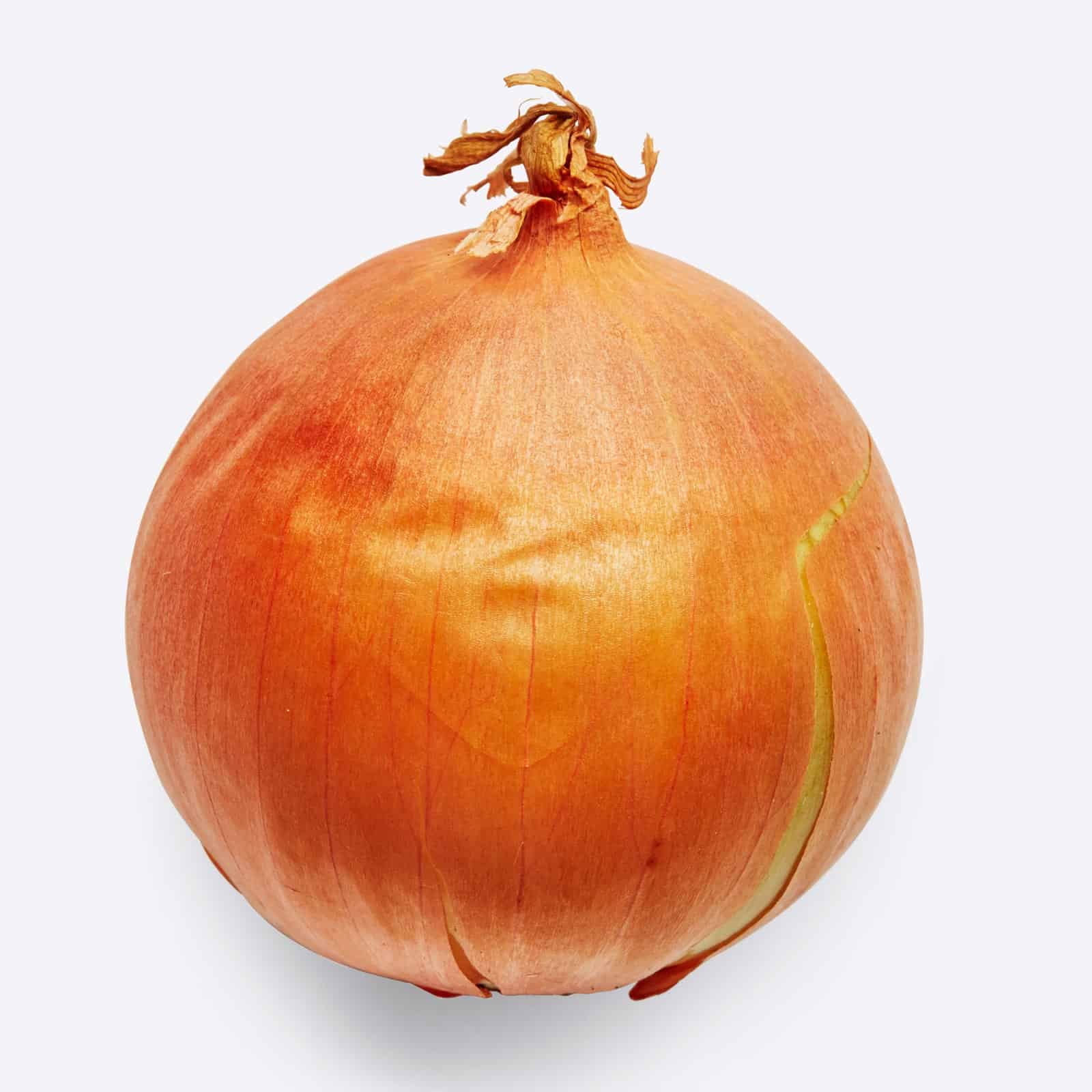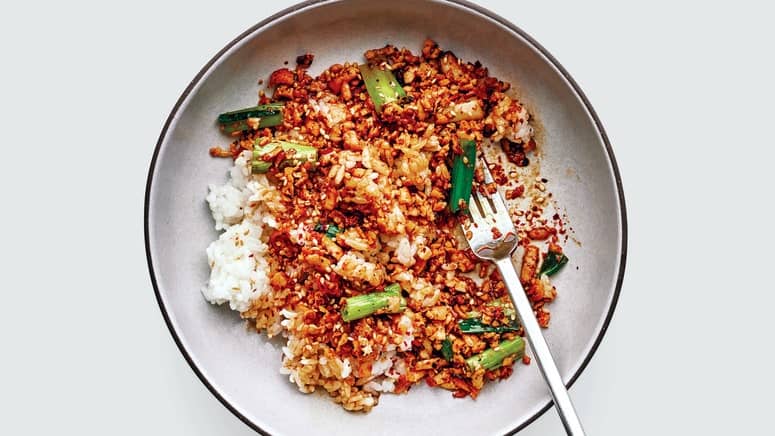Onions are members of the allium family, a genus of pungent plants that also includes garlic, leeks, chives, ramps, and hundreds of other species. Even among onions there are many, many different types, each with its own special qualities—a distinct onion personality, if you will.
But since we can’t possibly cover all alliums (all-iums?) in one article, we’ve divided just a fraction of those we reach for frequently into the three unofficial categories:
- Storage Onions
- Softies
- Little Guys
So what do we like about the different types of onions? And in what situation do we prefer one over the others? These are the great questions of our time…or at least of your most recent Google search. Here’s what you need to know about the different types of onions:
(1) Storage Onions
Because they’re cured (i.e., laid out to dry) after they’re harvested, usually in late summer, they’ll keep in your kitchen for months if stored properly. At the grocery store they’re likely labeled by color (white, yellow, and red), but at a farmers market, you may see proper names, like Australian Browns or Red Zeppelins. In terms of pungency, white are generally the mildest, red the sharpest, and yellow somewhere in between. And while we prefer yellow for cooking, white for garnishing, and red for pickling, grilling, and everything in between, they’re generally interchangeable: Switching between them won’t ruin a dish, even if it slightly alters its flavor or appearance.
Yellow Onions
“Old yeller.”
If a recipe doesn’t specify, chances are it’s calling for one of these old faithfuls (also called brown onions). In fact, nearly 90 percent of all storage onions grown in the U.S. are yellow. They’re severe when raw but mellow when sautéed, roasted, or caramelized. Because they have a relatively high starch content, they won’t dissolve to mush even after long cook-times, which makes them a great all-purpose cooking onion. Spanish onions, BTW, are a larger, milder relative that can be yellow or white—don’t stress about finding one when a recipe says so.
Red Onions
Sharper and spicier than yellow onions, you’ll often see them raw, whether in salads, like Greek salad or kachumber, or alongside long-cooking braises. Soak them in ice water as you prep your other ingredients to make them extra crisp and rid them of some fierceness. The obvious draw to a red onion is its color, with a deep red hue that provides a nice contrast. In some cases, though, they may discolor and turn light ingredients, like eggs, potatoes, and beans, a blueish-gray.
Hello, red onion.
When it comes to grilling, red onions are our first choice. Cut into wedges, they char nicely on the grill, and their interior texture goes jammy, instead of mushy, like white and yellow onions tend to do. They’re also our first choice for pickling, which we love to do when tacos, pizza, or fried rice are involved.
White Onions
Softer and milder than yellows and reds, these have thin, papery skins and, while still sharp, less of a lingering aftertaste. We prefer them cooked quickly or served raw, like in pico de gallo or atop huevos rancheros (they’re particularly popular in Latin and Central American cuisine), or whenever you need one in the dish and as a garnish (think chili).
A white onion sheds its skin.
You can further tame their flame by slicing one thinly and giving it an hour-long soak in cold water—they’ll be so sweet, you can practically eat them like a salad. (Okay, maybe that’s a little dramatic, but the flavor will mellow dramatically, and you can probably eat a lot more of them.)
(2) Softies
More delicate than storage onions, these should all be stowed in the refrigerator to extend their lifespan.
Sweet Onions
Hi sweetie.
Because they contain less sulfur and more water than yellows, reds, and whites, they’re mild, crisp, and good for eating raw, frying into onion rings, and stuffing like you would a mushroom or tomato. Defined by the particular region where they’re grown—Washington’s Walla Wallas, Georgia’s Vidalias, and Hawaii’s Mauis, for example—they’re often only available seasonally.
Green Onions
Also called scallions (on BA, we call these scallions exclusively!), bunching onions, and, confusingly, spring onions (wrong!), they’re milder, softer, and more herbaceous than any of the storage bulbs. They’re as good raw, like scattered over braised tofu or fried eggs, as they are slowly cooked, like infused into oil for Cantonese-style scallion sauce.



